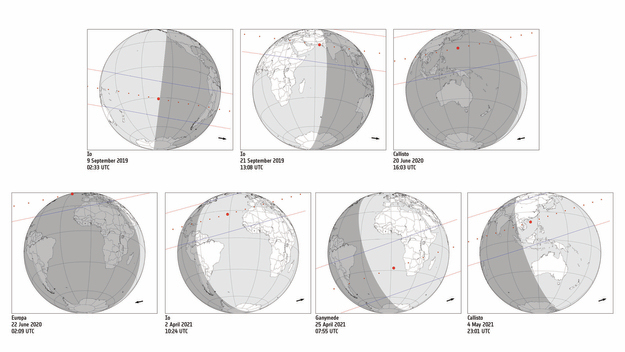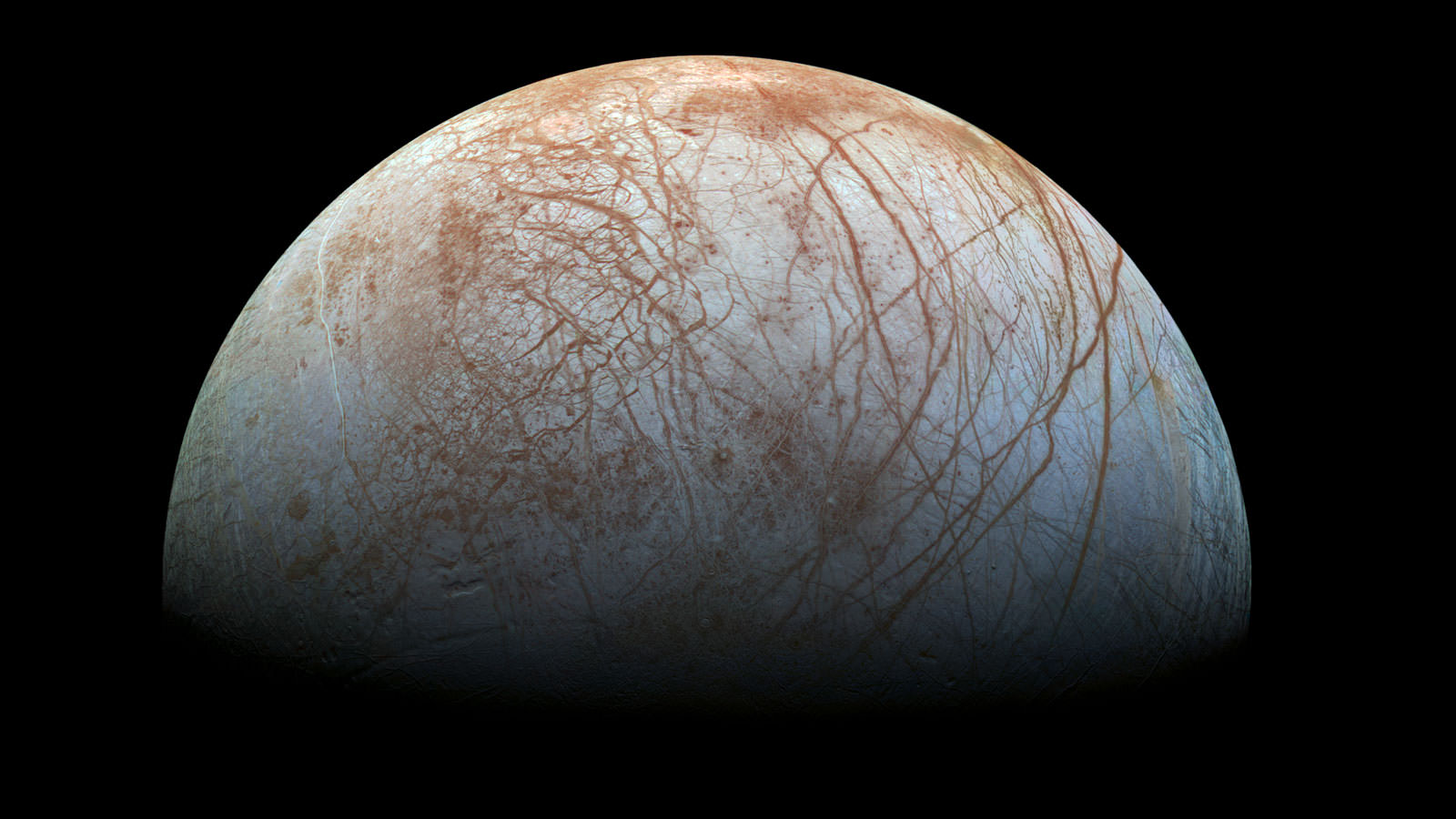Jupiter’s moon Europa continues to be a source of wonder and scientific intrigue. As one of the four Galilean Moons (so-named because of their founder, Galileo Galilee), Europa is one of Jupiter’s largest satellites and is considered one of the best bets for finding extraterrestrial life in the Solar System. And recently, it joined its cousins (Io and Callisto) in passing in front of a star.
This type of rare event (a stellar occultation) allows astronomers to conduct unique observations of a celestial body. In Europa’s case, the occultation took place in 2017 and allowed astronomers to make more precise measurements of Europa’s size, its position relative to Jupiter, and its true shape. All this was made possible by the ESA’s Gaia Observatory, which let astronomers know exactly when and where to look for the moon.
The study which describes these findings recently appeared in the journal Astronomy & Astrophysics. The team behind it was led by Dr. Bruno Morgado, a researcher from the National Observatory and the Inter-Institutional of Astronomy Laborat

In addition to being rare, occultations are extremely valuable to astronomers. Much like when planets transit in front of their host star, stellar occultations enable measurements of the characteristics of the body that is in the foreground (i.e. size, shape, position, etc.) and can reveal if it has an atmosphere, rings, jets emanating from it, and other characteristics.
Thanks to the Gaia mission – which has been measuring the position, motion, and distances of over 1 billion stars since 2013 – astronomers knew exactly when Europa would be passing in experiencing an occultation. The international team was then able to aim ground-based telescopes to the right area of the sky to witness the event. As Dr. Morgado said of the occultation and what it made possible in a recent ESA press release:
“We used data from Gaia’s first data release to forecast that, from our viewpoint in South America, Europa would pass in front of a bright background star in March 2017 – and to predict the best location from which to observe this occultation. This gave us a wonderful opportunity to explore Europa, as the technique offers an accuracy comparable to that of images obtained by space probes.“
What they found was that the occultation would be visible from a thick band moving across South America from north-west to south-east. A total of eight observatories attempted to conduct observations of the event, but only three (located in Brazil and Chile) were able to capture data due to poor weather conditions.

Using information from the second Gaia data release (DR-2) also allowed the team to determine when Europa and the other Galilean Moons would be experiencing a stellar occultation again in the future, through 2019 and 2021. As Dr. Morgado added:
“It’s likely that we’ll be able to observe far more occultations like this by Jupiter’s moons in 2019 and 2020. Jupiter is passing through a patch of sky that has the galactic center in the background, making it drastically more likely that its moons will pass in front of bright background stars. This would really help us to pin down their three-dimensional shapes and positions – not only for Jupiter’s four largest moons, but for smaller, more irregularly-shaped ones, too.“
In the near future, occultations will happen involving Europa on June 22nd, 2020; Callisto on June 20th, 2020 and May 4th, 2021; Io on September 9th and 21st, 2019 and April 2nd, 2021; and Ganymede on April 25th, 2021. These
“Stellar occultation studies allow us to learn about moons in the Solar System from afar, and are also relevant for future missions that will visit these worlds. As this result shows, Gaia is a hugely versatile mission: it not only advances our knowledge of stars, but also of the Solar System more widely.“
This data will also be very useful in the coming decade when it comes time to plan missions to study Europa. These include the ESA’s
As such, this positional data will be highly essential so that the mission teams can make sure the probes get to where they need to be. As Olivier Witasse, ESA’s JUICE Project
“These kinds of observations are hugely exciting. JUICE will reach Jupiter in 2029; having the best possible knowledge of the positions of the system’s moons will help us to prepare for the mission navigation and future data analysis, and plan all of the science we intend to do. This science depends upon us knowing things such as accurate moon trajectories and understanding how close a spacecraft will come to a given body, so the better our knowledge, the better this planning – and the subsequent data analysis – will be.“
The purpose of the Gaia mission, which has been in operation since late 2013, is to create the most detailed three-dimensional map of our galaxy to date. In the course of its mission, which was recently extended to 2022, it will map and characterize the positions, distances and motions of over 1 billion stars, planets, comets, asteroids, and other galaxies.
There have been two releases of data from the Gaia mission so far, the first of which (DR1) took place in September of 2016 while the second (DR2) followed in April of 2018. These releases were based on data obtained during the first three years of the mission, spanning from July 2014 to May of 2016, and have already led to many new and intriguing discoveries.
Because of uncertainties with the data pipeline and processing, the ESA is planning on splitting the third data release (DR3) into two packages. The first will be released during the third quarter of 2020 while the second will follow during the second half of 2021. The full data release (DR4) of the five-year nominal mission (2014 – 2019) is yet to be determined.
And since the mission was recently extended to the end of 2022, we can expect to be hearing about Gaia-related discoveries for several years to come.
Further Reading: ESA

